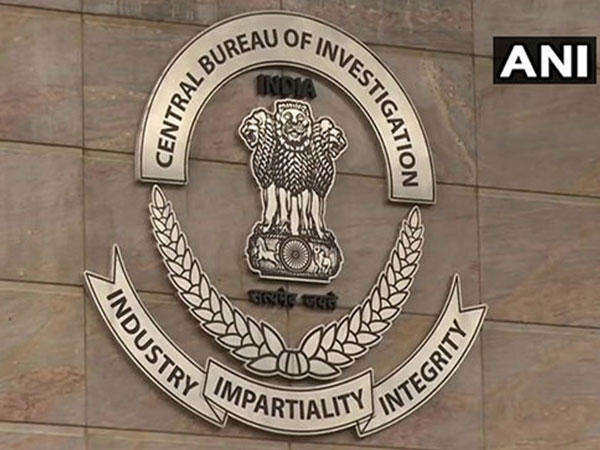
Assam CM attends launch of "Third Ampere", celebrating 25 years of Assam Electricity Regulatory Commission
Jun 20, 2025
Guwahati (Assam) [India], June 20 : In Assam, electricity demand has risen by an average of 11% annually over the past four years, a growth driven by infrastructural expansion, industrialisation, and steadily improving standard of living.
If this trend persists, the state's daily electricity requirement is expected to reach 5,500 megawatts by 2035. To ensure Assam attains self-reliance in electricity production by then, the present State Government has initiated preparatory measures.
Assam Chief Minister Dr Himanta Biswa Sarma underscored this on Friday at the release of THIRD AMPERE, a volume chronicling the beginning, evolution, and transformation of the power sector in Assam and the Northeast.
The event, held at the Assam Administrative Staff College in Guwahati, also marked the silver jubilee of the Assam Electricity Regulatory Commission (AERC), during which the Chief Minister released five newly introduced and revised regulatory frameworks developed by the AERC.
Speaking on the occasion, Dr. Sarma observed that electricity is intrinsically linked to the development of any region, as power availability and affordability invariably come to the fore with the onset of industrial and developmental activity.
He noted that Assam presently generates about 500 megawatts of electricity independently while drawing nearly 1,800 megawatts daily from the central grid. In recent weeks, peak summer demand surged to 2,700 megawatts, a figure that might rise to 2,900 megawatts by September if current patterns persist.
Speaking on the subject of investment, the Chief Minister highlighted that during the Advantage Assam 2.0 summit, investment proposals amounting to Rs. 5 lakh crores were signed - Rs. 3 lakh crores in the industrial sector and Rs. 2 lakh crores in the infrastructure sector.
He stated that, based on these agreements, work is already underway on projects worth Rs. 60,000 crores, with several of these ventures expected to become operational by year's end. These developments, he added, would further raise the state's electricity requirements.
Dr. Sarma noted that, alongside the impact of climate change, Assam's rapid development is contributing to an exponential rise in electricity demand - a trend expected to persist in the coming years. In response, the state government has devised a long-term, self-reliant energy strategy to meet projected power needs by 2035. As part of this plan, an initiative has been launched to generate 5,000 megawatts of solar power, with suitable sites also being identified for the installation of 8,000 megawatts of pumped storage systems to store solar energy for nocturnal use.
Additionally, he mentioned that the Union Ministry of Power has recently approved the setting up of a 3,000-megawatt thermal power project in Assam.
The Chief Minister also highlighted the measures undertaken by the government in the power sector over the past four and a half years. He noted that this period has seen substantial investment and significant infrastructural reform, resulting in a marked reduction in power transmission and distribution losses, from nearly 29-30% down to 15.5%.
He further stated that the smart meter initiative has yielded positive outcomes. As a result of these reforms, all three agencies operating in the sector have become profitable, enabling the state to reduce electricity tariffs by Rs. 1 per unit.
Dr. Sarma acknowledged the vital role played by the Assam Electricity Regulatory Commission (AERC) in shaping the state's power sector over the past 25 years.
He emphasised that the Commission has worked in close coordination with the state government to steer the sector towards a sustainable future. He expressed hope that the book THIRD AMPERE would provide readers with a comprehensive view of Assam's power sector--its historical evolution, present accomplishments, and future trajectory.
He further stated that the five newly introduced and revised regulatory frameworks would meaningfully benefit electricity consumers, producers, and distributors alike.
Notably, THIRD AMPERE includes many fascinating details, including the electrification of Shillong in 1923, making it the first city in undivided Assam and the entire Northeast to be electrified, followed by the lighting of electric bulbs in Jorhat in 1924, and the commencement of electrification in Guwahati and Tezpur in 1927 and 1933 respectively.
The book also highlights the contributions of Kashinath Saikia, a pioneering figure in Assam's electricity generation, and the establishment of the Assam State Electricity Board in 1958, among other significant milestones.
The event was also attended by Chairperson of the Assam Electricity Regulatory Commission Kumar Sanjay Krishna, Member of the Commission Alokeshwar Bhattacharyya, former Chairpersons Subhash Chandra Das and Jayanta Borkakati, and Chancellor of Nagaland University Dr. Samudra Gupta Kashyap, along with other dignitaries.























